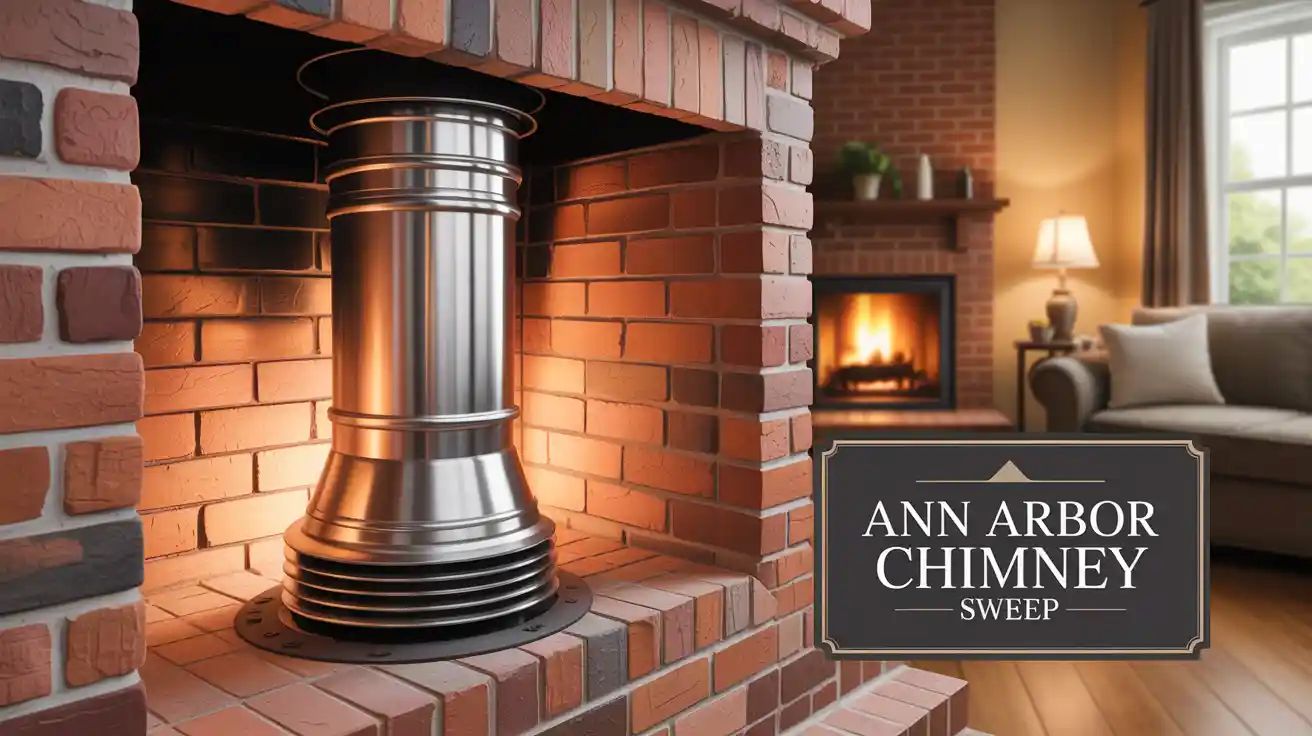Buying your first home is a thrilling adventure, especially in a unique place like Ann Arbor, where character-filled older homes are everywhere. While you may be dreaming about cozy evenings by the fireplace, there’s a behind-the-scenes hero you may not have heard about yet: the chimney liner. It may not be on your radar, but it’s one of those things that can make a big difference in your safety and comfort. Let’s take a closer look at chimney liners, what they do, and why you should pay attention to them as a new homeowner. And if you ever need help, Ann Arbor Chimney Sweep is always ready to answer your questions about Chimney Liners.
What Exactly Is a Chimney Liner (And Why Should You Care)?
If you’ve ever peeked into a fireplace and wondered where all that smoke goes, you’re not alone. The inside of your chimney isn’t just a hollow brick tunnel. It should have a liner — think of it as a protective sleeve that lines the inside walls of the chimney. Its job? To keep your chimney working efficiently and to prevent dangerous gases and heat from causing trouble where they shouldn’t.
A chimney liner basically acts like a barrier, making sure that all the smoke, fumes, and even tiny embers move smoothly up and out of your house, instead of seeping into the brickwork or, even worse, into your living space. Without this liner, you could end up with crumbling bricks, trapped gases, and a much bigger risk of fire.
“A good chimney liner is like an insurance policy for your home’s heart — it protects, it preserves, and it brings peace of mind.”
Why Should First-Time Buyers in Ann Arbor Pay Extra Attention?
Ann Arbor is full of older homes with a lot of personality, but sometimes their chimneys haven’t been updated in decades. Some may not even have a proper liner, especially if they were built before modern building codes came into play. If you’ve just bought a house—or are about to—asking about the chimney liner during your inspection is a must.
A well-installed liner is your defense against carbon monoxide leaks, chimney fires, and costly repairs. It’s not just about following the rules; it’s about protecting your family and investment from the get-go.
Key Features, Safety, Cost, and Emergency Service: The Essentials at a Glance
| Key Feature | Safety | Cost | Emergency Service |
|---|---|---|---|
| Protects chimney walls from heat and corrosion | Helps prevent chimney fires and toxic gas leaks | $1,500 – $4,000 for installation (varies by liner type & size) | Ann Arbor Chimney Sweep offers 24/7 emergency help if your liner is damaged |
How Do I Know If My Chimney Liner Needs Attention?
Most first-time buyers aren’t chimney experts, and that’s okay! Here are a few signs that your liner might need a checkup: you notice bits of tile or metal at the bottom of your fireplace, your fires are smoky even with the damper open, or you see cracks in the chimney bricks themselves. Regular inspections—once a year is a good rule of thumb—can spot problems early and keep your home safe.
Sometimes, a liner just gets old or wasn’t installed properly in the first place. If your home inspector flags the chimney or you’re unsure about the liner’s condition, call a local pro. Ann Arbor Chimney Sweep can evaluate your liner, suggest repairs or replacement, and make sure you’re set for years of safe fireside evenings.
FAQs About Chimney Liners for Ann Arbor Homebuyers
Q1: How do I know what type of chimney liner my home has?
A: Most people can’t tell just by looking up the chimney. Liners may be clay tiles, metal, or even a poured-in-place material. Your home inspector or a chimney professional can use special cameras to check what’s inside and let you know the type, age, and condition.
Q2: How often should I have my chimney liner checked?
A: Once a year is a smart routine. Regular inspections can catch cracks, blockages, or corrosion before they become real hazards. If you use your fireplace a lot, or after a big storm, getting an extra check won’t hurt.
Q3: Is it possible to repair a chimney liner, or do I always need a new one?
A: Sometimes minor damage can be fixed, especially with metal liners. But if the liner has big cracks, gaps, or missing sections, it’s usually safer—and more cost-effective in the long run—to replace it.
Q4: What happens if I don’t have a chimney liner?
A: Without a liner, you’re risking smoke damage, carbon monoxide leaks, and a much higher chance of a chimney fire. It can also make your furnace or fireplace less efficient and may even void your homeowner’s insurance.
Conclusion
When you’re getting settled into your new Ann Arbor home, it’s easy to focus on paint colors and furniture, but don’t overlook your chimney’s health. A solid, well-maintained liner is crucial for both safety and comfort. If you’re not sure where to start, or if you need emergency help after a storm or sudden damage, Ann Arbor Chimney Sweep is just a call away. They’ve got the experience (and the right tools) to keep your chimney working its best—so you can enjoy your new home without worry over your Chimney Liners.
In the end, knowing a little about chimney liners can go a long way toward protecting your investment and your loved ones. Take the time to ask questions, get your chimney checked, and don’t be shy about calling in the experts. Your fireplace—and your peace of mind—will thank you!
Read More: Ann Arbor Chimney Sweep


